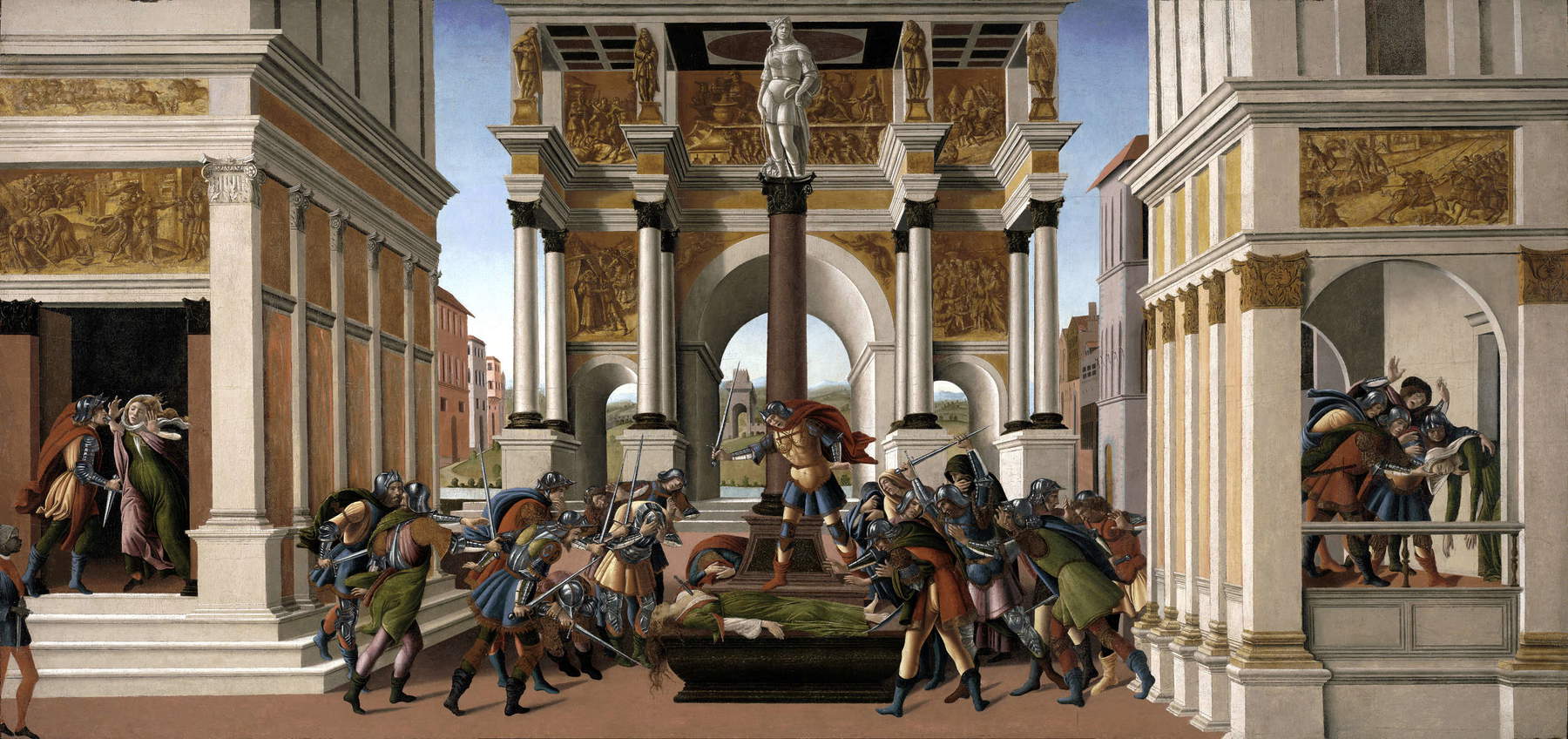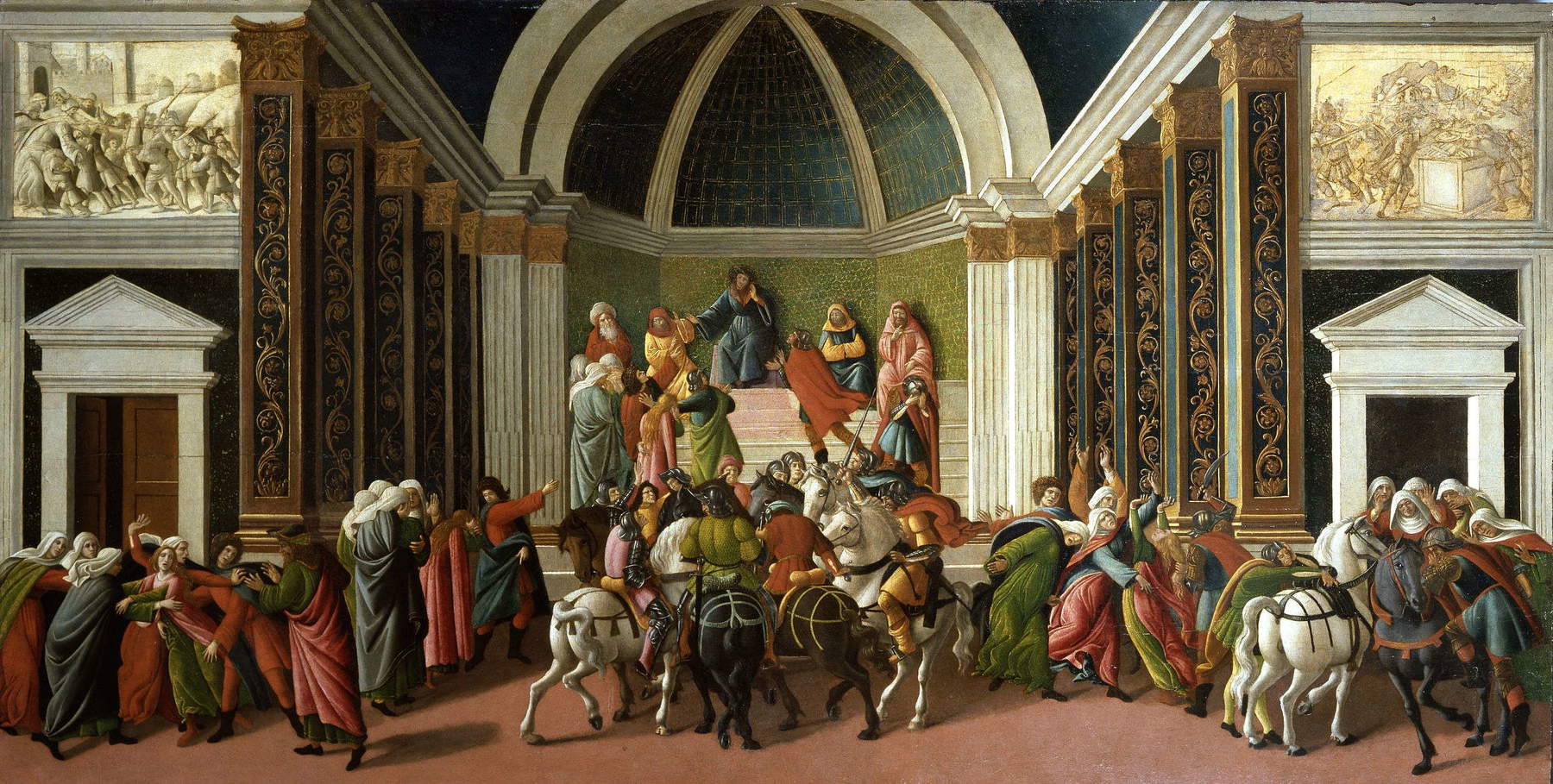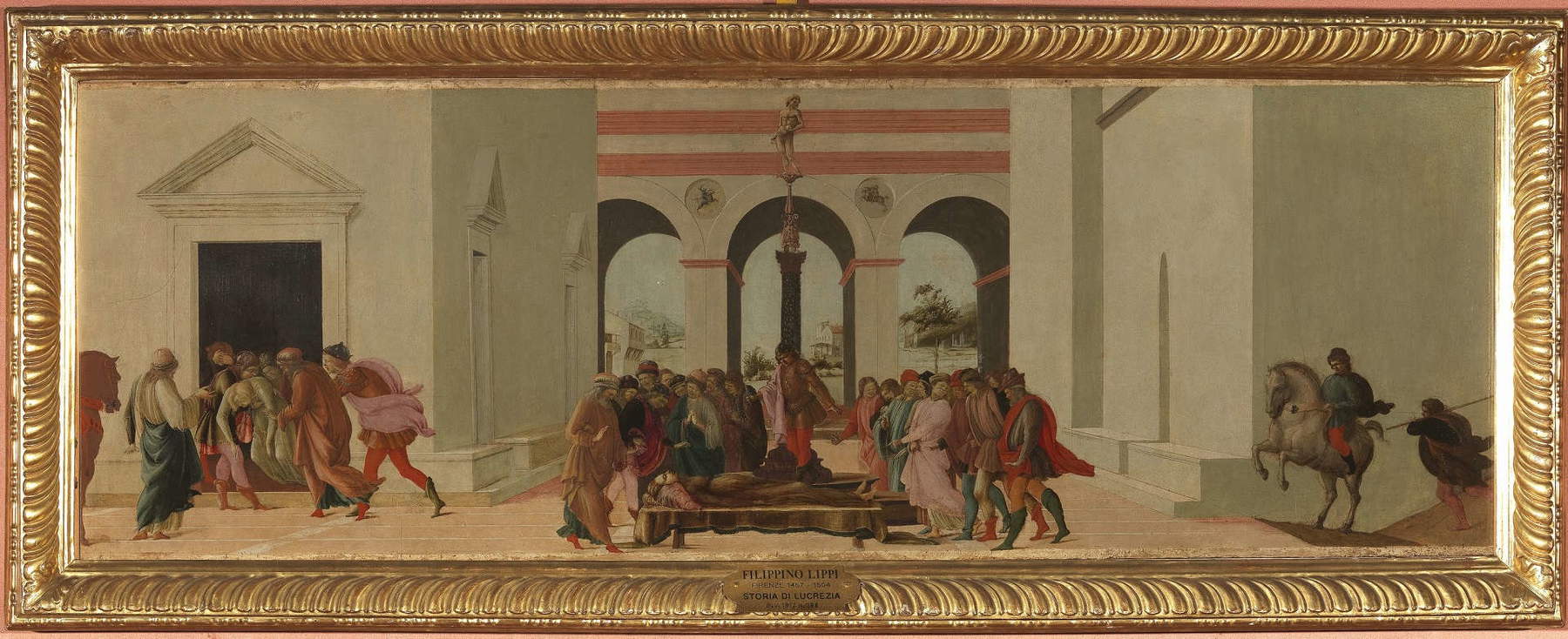Lucretia ’s is a tragic story. It is a story of rape in ancient Rome, but also of honor violated. And it is a story that ends in tragedy because so strong is the shame at the thought of being unjustly considered an adulteress, she who was completely devoted to her marital union and extremely virtuous, that she prefers to give herself death, committing suicide by stabbing herself in the chest with a knife. “From this day on, no woman, after the example of Lucretia, shall live in dishonor!” these were her last words before killing herself, as recounted by one of the most famous historians of his time, Titus Livy, in his Ab Urbe condita libri, in which the history of Rome from its founding in 753 B.C. until the death of Drususus in 9 B.C. is narrated.
We are at the end of the 6th century BC and Rome is ruled by a monarchy, with King Lucius Tarquinius the Superbus in power, the last ruler of the city, whose reign is remembered as tyrannical and oppressive. One of his sons is Sextus Tarquinius, who plays a central role in the story of Lucretia, the beautiful Roman matron who became a symbol of female virtue and is remembered as one of the most significant female figures of ancient Rome, so much so that she led to a radical political change, namely the end of the monarchy and the birth of the Roman Republic.
Daughter of Spurius Lucretius Tricipitinus and wife of Lucius Tarquinius Collatinus, Lucretia was known for her beauty, but above all for her loyalty and moral rectitude. According to the legend handed down by Livy, during the siege of Ardea the king’s sons and some Roman nobles got into an argument over which of their wives was the most virtuous. Among them was Lucius Tarquinius Collatinus, Lucretia’s husband. To ascertain who was right, they decided to return by night to Rome and to their respective abodes, and once they arrived, they discovered how much Lucretia surpassed the others: even in the absence of her husband, they found her devoted late at night to spinning wool surrounded by her handmaids, unlike the wives of the king’s sons whom they had found enjoying themselves amid banquets and luxuries among their peers. Lucretia’s exemplary conduct thus immediately attracted the admiration of Sextus Tarquinius, son of King Tarquin the Proud.

A few days later, Sextus Tarquinius returned with a companion to Lucretia’s house in Collatia, unbeknownst to her husband Collatinus, and there he was received benevolently by the woman as was customary among nobles, but she was totally unaware of Sextus’ true intentions. After lunch, when everyone seemed to be asleep, Tarquinius entered Lucretia’s room and threatened her with his drawn sword, pressing her chest with his left hand, “Shut your mouth! I am Sextus Tarquinius. I have the sword in my hand; you will die if you utter a single word!” And he added shame to the fear of Lucretia, who saw death in his face. If she had not given herself to him, he would have killed her and made the scene look like adultery, besmirching her honor even in death; he said he would have laid her beside a slain and naked servant so that it could be said she had been killed in a sordid adultery. Threatened and alone, the woman was raped. Grieving over so great an evil, she immediately sent for her husband and father: Spurius Lucretius arrived with Publius Valerius, while Collatinus arrived with Lucius Junius Brutus, whom he had met by chance on the street after hearing the news of his wife. They found Lucretia sitting sadly in her room. She tearfully recounted what had happened without omitting anything, and then said to her husband, “How is everything all right with a woman who has lost her honor? In your bed, Collatinus, are the traces of another man: only my body has been violated, my heart is pure, death will witness. But swear to me that the adulterer shall not go unpunished. It is Sextus Tarquinius: it is he who came here last night and, returning hostility in exchange for hospitality, armed and by force abused me. If you are true men, let that report be fatal not only to me but also to him.” One after the other they all swore and tried to console her by stating first of all that the fault lay only with the perpetrator of that crime and not with her who had been the victim of it, and then that if there is a lack of intention there can be no question of guilt. But she did not listen to anyone’s claims and concluded by saying, “It is up to you to determine what he deserves. As for me, even if I absolve myself of guilt, it does not mean that I will not have punishment. And from now on, no woman, after the example of Lucretia, will live in dishonor anymore!” She grabbed at that point a knife she kept hidden under her robe and pierced her chest, choosing death over living in shame. Lucretia’s desperate and noble gesture had a most powerful echo. Brutus, wielding the still bloody knife, swore revenge and incited the Roman people to revolt, after taking Lucretia’s body to the forum, where many people had flocked. There a speech was delivered about the violence and lust of Sextus Tarquinius, the horrific rape and suicide of Lucretia, and the mourning of Tricipitinus. It was the climax of an already latent discontent with Tarquin despotism: Brutus urged the enraged multitude to abolish the monarchy and exile King Tarquin the Proud with his wife and children. Two followed their father, who had been exiled to Cere against the Etruscans, while Sextus Tarquinius, who left for Gabii, was killed by avengers of old grudges, which he himself had provoked by murder and robbery. Thus the monarchy came to an end, and in its place the Roman Republic was established. The first two consuls elected were indeed Lucius Junius Brutus and Lucius Tarquinius Collatinus.
The story of Lucretia, a legendary figure who became a symbol of marital fidelity, virtuousness, and republican freedom, is fully described in Sandro Botticelli’s work of the same name, now housed in theIsabella Stewart Gardner Museum in Boston. In fact, before the viewer’s eyes unfolds the entire story of violence leading up to the revolt, punctuated in three episodes. On the far left opens the initial episode: Lucretia is surprised and threatened already on her doorstep by Sextus Tarquinius, unlike when narrated by Livy who sets the violence in the woman’s bedroom, surprising her while she is sleeping. In the painting, the man, armed with a dagger, looms over her with a ravenous and determined gaze. Lucretia has no way out; she raises her hands to protect herself, but power is already entering her home, to violate her body and destroy her destiny. The second scene is seen on the far right of the painting, mirroring the first. The woman, pale and humiliated, collapses in front of her family in shame at what has happened. The pain is all concentrated in the gesture: her body sags and falls forward, her face bent toward the ground, her arms dangling. Around her, a group of four men support her: they are family members who have come to her rescue along with two acquaintances who react with indignation and dismay. It is here that Botticelli depicts the intimacy of grief that shortly afterwards will turn into public and political fact. In the third episode, in the center of the composition, the scene widens: Lucretia’s body, lying on a slab and still with the knife in her chest, becomes a political body, the first ground for rebellion. Brutus in armor raises his sword and harangues the people, who have already rushed into the square. Some people comment on the incident, others brandish swords, and still others raise their heads in grief and despair. Lucretia’s gesture has already produced its effects: her death has already ignited the fire of revolt. It is a decisive narrative and symbolic passage, as private grief becomes public justice, offended honor generates profound political change. Moreover, the central scene takes place under a tall column on the top of which stands the statue of the victorious David with the head of Goliath at his feet, the biblical hero symbol of Florence that refers to the birth of the Florentine republic after the end of the Medici power (this is why the famous statue of David stands right in front of Palazzo Vecchio in the Tuscan capital). A parallel, then, between the expulsion of Tarquini in ancient Rome and the end of Medici rule, which in both cases leads to the birth of the Republic.
Botticelli in fact sets the Stories of Lucretia not in an idealized ancient Rome, but among columns, loggias, arches and Renaissance architecture with gilded panels, explicitly recalling the Florence of his time.
The painting, done in tempera and oil on panel in about 1500, was originally made to decorate a Florentine palace on the occasion of a wedding. It was probably commissioned for Giovanni di Guidantonio Vespucci and Namicina di Benedetto Nerli, as part of an espalier at Casa Vespucci. A paradox only apparent: in the Renaissance, tragic scenes like Lucretia’s were often chosen to adorn wedding chests, the large chests that held the bride’s trousseau. And the figure of Lucretia, a model of extreme virtue, was particularly suitable for depiction on these chests usually placed in bedrooms.
As part of the purchase of Casa Vespucci, the work was acquired in 1533 by Piero Salviati; it then passed by inheritance to Lucrezia Salviati and her husband Giovanni de Bardi di Vernio, a musician and writer. It is then documented in the collection of Bertram Ashburnham, Sussex, by 1894, when the painting was purchased for £3400 through the famous art historian Bernard Berenson by Isabella Stewart Gardner, where it remains today.
It should also be considered that the work was paired with another work by Botticelli, made in about 1505, whose theme pendants with the one in Boston, namely the History of Virginia Romana, now in theAccademia Carrara in Bergamo, arriving there through the bequest of art historian Giovanni Morelli in 1891. This story is also narrated by Titus Livy and tells of themurder of Virginia, a beautiful young plebeian of irreproachable honesty, by her father in order to preserve her honor, since the decemvir Appius Claudius had fallen in love with her and instructed Marcus Claudius to pretend to be the girl’s master, claiming that she was in fact his slave. Before a tribunal presided over by Appius Claudius, the girl was declared a slave. The father, summoned from the military camp rushed in despair and realizing that there was no way to remove his daughter from the abuse of power, in order to defend his daughter’s honor, kills her amidst the grief of her family and the citizens, who drive the decemvirs out of Rome. So again Botticelli brings to one of his works the story of a young woman who, while paying with her own life, defends female virtue and honor.



In addition to inspiring William Shakespeare for his poem The Rape of Lucrece written in 1594, many other artists, such as Filippino Lippi, depicted the story of the Roman matron. Similar to Botticelli’s painting, Lippi depicted the story a few years earlier, between about 1478 and 1480, but in this case through two crucial episodes in the same work instead of three. On the left, the dying young woman can be seen being supported on the doorway, while in the center of the scene she can be seen lying down, surrounded by many people who had flocked to the tragic event, at the moment when Brutus, in the midst of the crowd and under the column on which stands the statue of a young hero, incites revenge, rebellion, and the ouster of the king. This is anearly work by Filippino Lippi, which is now in the Palatina Gallery in the Pitti Palace, but was originally part of the decoration of a wedding chamber in a Florentine Renaissance palace along with another work with the Storie du Virginia, now in the Louvre in Paris.
Among the most famous works dealing with this subject is undoubtedly Titian ’s preserved at the Fitzwilliam Museum in Cambridge. If in the paintings mentioned so far, Botticelli and Filippino Lippi depicted the whole affair by dividing the scene into the two or the three main episodes, Titian, in Tarquinius and Lucretia, depicts precisely the moment of the rape, when the king’s son violently bursts into the room of the young woman who was lying naked in her bed, dressed only in her jewels. Tarquinius grabs Lucretia by one arm while with his other hand he brandishes his sword toward her; the woman tries to defend herself and push the man away by pushing him away with only the force of one hand against his chest. Her gaze is frightened, her mouth half-open, her cheeks flushed; on her face the terror of a violence that will soon take place and the knowledge that she cannot stop it. A man emerges from behind the wide curtains, perhaps rushing to see what is happening or perhaps to act as a lookout for Tarquin, but in neither case is he mentioned in Livy’s text. It is, however, a presence that appears secondary and does not intervene in any way to prevent the gesture. Made in about 1571, the painting falls stylistically within 16th-century Venetian painting and was probably commissioned by Philip II of Spain to remain in the Spanish royal collection until 1813, when Joseph Bonaparte, Napoleon’s older brother, took it to France.
Many other artists have instead depicted her at the moment of suicide, alone and bare-breasted, dagger in hand, ready to stab herself to death, in an attitude depending on the case more set or more theatrical: from Lucas Cranach the Elder to Albrecht Dürer, from Artemisia Gentileschi to Guido Reni to Parmigianino, from Guido Cagnacci to Leandro Bassano, from Carlo Maratta to Paolo Veronese.
An innocent victim and at the same time the perpetrator of an act that would radically change the politics of ancient Rome, Lucretia has imprinted herself in the collective imagination as the embodiment of conjugal virtue and moral purity. Her myth has spanned the centuries by breaking into the paintings of great masters, each through his or her own era and sensibility. Her gesture generated a sudden shift from private grief to revolt; Lucretia did not remain imprisoned in the role of the sacrificial victim, but became an emblem of an ethic that puts self-truth before the injustice of power, refusing to yield to dishonor.
Warning: the translation into English of the original Italian article was created using automatic tools. We undertake to review all articles, but we do not guarantee the total absence of inaccuracies in the translation due to the program. You can find the original by clicking on the ITA button. If you find any mistake,please contact us.